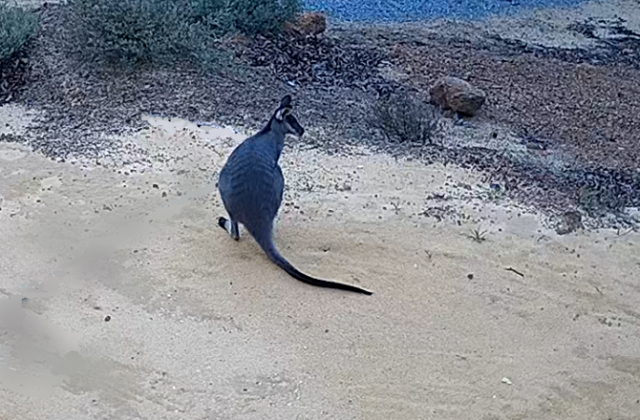Last month we asked you, the reader, to report any sightings of the Black Gloved Wallaby also known as the Western Brush Wallaby (Notamacropus irma.) But this shy macropod remains almost as elusive as ever. We have received only one report of a sighting. To be able to quietly observe this animal in your own garden must be a very special experience and we thank the family who called in their observations of this unique Wallaby.
This observation on a property in Chittering was no flash of a startled animal taking off into the bush – but the opportunity to take note of the black tips of their fore-paws and see the brush tipped tail. This is obviously a favoured and safe destination – not for just one but for three adult Black Gloved Wallabies. They visit the garden regularly along with a contingent of the more common Western Grey Kangaroos (Macropus fuliginosus).
The Wallabies occasionally arrive in the early morning. However, in summer they appear to be a lot less skittish as they regularly show up just on dusk and can be observed for a couple of hours feeding in the open and using the drinking facilities.
This sighting of the family of Wallabies will be passed on to the Department of Biodiversity, Conservation and Attractions (DBCA) for their information and future research as this marsupial is close to being listed on the Threatened Species list.
We live in a very mixed geological area and are fortunate to see wildlife every day from the variety of lizards basking in the sun, to young magpies calling to their parents, or the biggest of our local Macropods – the Western Grey Kangaroo. The more we can learn about this huge range of wildlife the more we can help to keep them safe in the environment we share with them.








